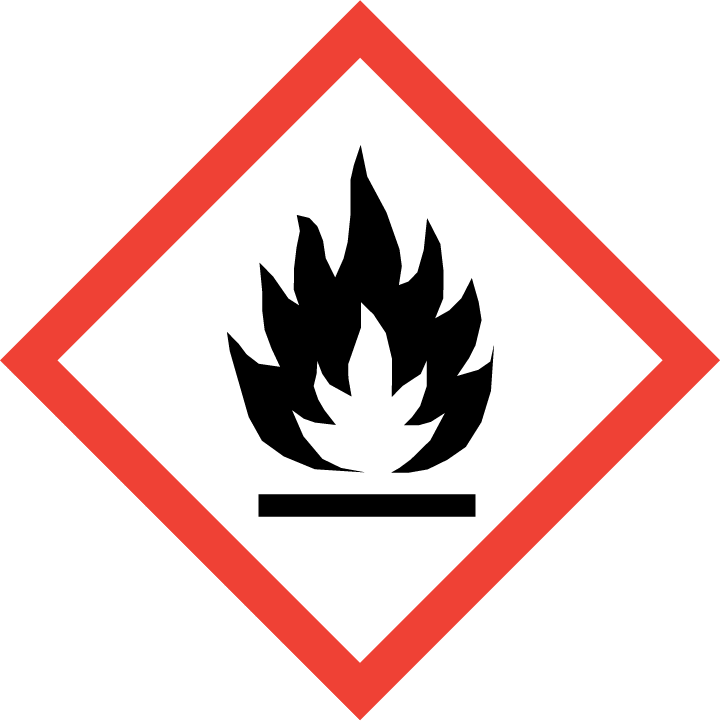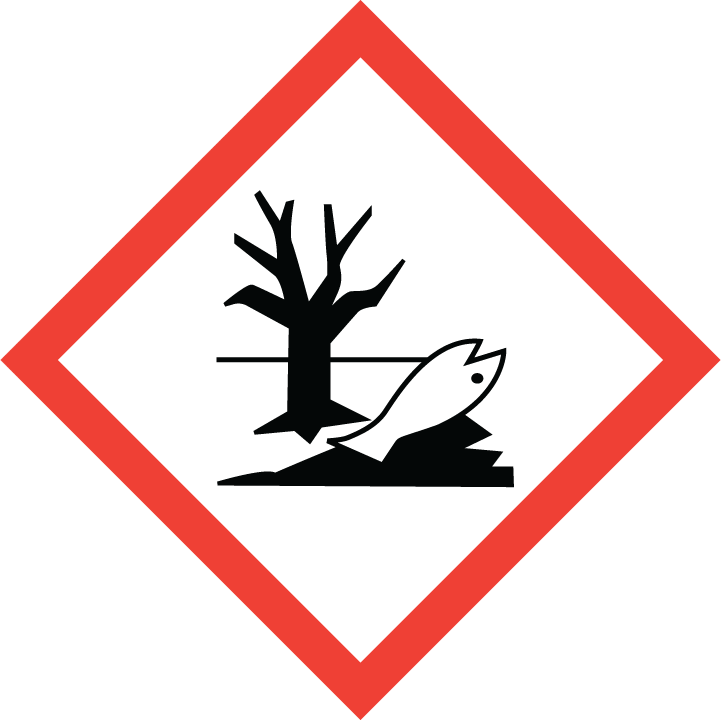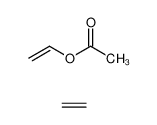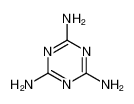| Product name | allyl alcohol |
|---|
| Product number | - |
|---|---|
| Other names | 2-propen-1-ol |
| Identified uses | For industry use only. Intermediates |
|---|---|
| Uses advised against | no data available |
| Company | MOLBASE (Shanghai) Biotechnology Co., Ltd. |
|---|---|
| Address | Floor 4 & 5, Building 12, No. 1001 North Qinzhou Road, Xuhui District, Shanghai, China |
| Telephone | +86(21)64956998 |
| Fax | +86(21)54365166 |
| Emergency phone number | +86-400-6021-666 |
|---|---|
| Service hours | Monday to Friday, 9am-5pm (Standard time zone: UTC/GMT +8 hours). |
Flammable liquids, Category 2
Acute toxicity - Oral, Category 3
Acute toxicity - Dermal, Category 3
Skin irritation, Category 2
Eye irritation, Category 2
Acute toxicity - Inhalation, Category 3
Specific target organ toxicity – single exposure, Category 3
Hazardous to the aquatic environment, short-term (Acute) - Category Acute 1
2.2 GHS label elements, including precautionary statements| Pictogram(s) |    |
|---|---|
| Signal word | Danger |
| Hazard statement(s) | H225 Highly flammable liquid and vapour H301 Toxic if swallowed H311 Toxic in contact with skin H315 Causes skin irritation H319 Causes serious eye irritation H331 Toxic if inhaled H335 May cause respiratory irritation H400 Very toxic to aquatic life |
| Precautionary statement(s) | |
| Prevention | P210 Keep away from heat, hot surfaces, sparks, open flames and other ignition sources. No smoking. P233 Keep container tightly closed. P240 Ground and bond container and receiving equipment. P241 Use explosion-proof [electrical/ventilating/lighting/...] equipment. P242 Use non-sparking tools. P243 Take action to prevent static discharges. P280 Wear protective gloves/protective clothing/eye protection/face protection. P264 Wash ... thoroughly after handling. P270 Do not eat, drink or smoke when using this product. P261 Avoid breathing dust/fume/gas/mist/vapours/spray. P271 Use only outdoors or in a well-ventilated area. P273 Avoid release to the environment. |
| Response | P303+P361+P353 IF ON SKIN (or hair): Take off immediately all contaminated clothing. Rinse skin with water [or shower]. P370+P378 In case of fire: Use ... to extinguish. P301+P310 IF SWALLOWED: Immediately call a POISON CENTER/doctor/… P321 Specific treatment (see ... on this label). P330 Rinse mouth. P302+P352 IF ON SKIN: Wash with plenty of water/... P312 Call a POISON CENTER/doctor/…if you feel unwell. P361+P364 Take off immediately all contaminated clothing and wash it before reuse. P332+P313 If skin irritation occurs: Get medical advice/attention. P362+P364 Take off contaminated clothing and wash it before reuse. P305+P351+P338 IF IN EYES: Rinse cautiously with water for several minutes. Remove contact lenses, if present and easy to do. Continue rinsing. P337+P313 If eye irritation persists: Get medical advice/attention. P304+P340 IF INHALED: Remove person to fresh air and keep comfortable for breathing. P311 Call a POISON CENTER/doctor/… P391 Collect spillage. |
| Storage | P403+P235 Store in a well-ventilated place. Keep cool. P405 Store locked up. P403+P233 Store in a well-ventilated place. Keep container tightly closed. |
| Disposal | P501 Dispose of contents/container to ... |
none
3.Composition/information on ingredients 3.1 Substances| Chemical name | Common names and synonyms | CAS number | EC number | Concentration |
|---|---|---|---|---|
| allyl alcohol | allyl alcohol | 107-18-6 | none | 100% |
Consult a physician. Show this safety data sheet to the doctor in attendance.
If inhaledFresh air, rest.
In case of skin contactRemove contaminated clothes. Rinse and then wash skin with water and soap.
In case of eye contactFirst rinse with plenty of water for several minutes (remove contact lenses if easily possible), then refer for medical attention.
If swallowedRinse mouth. Give one or two glasses of water to drink. Induce vomiting (ONLY IN CONSCIOUS PERSONS!). Rest. Refer for medical attention .
4.2 Most important symptoms/effects, acute and delayedAllyl alcohol is an intense irritant to skin, eyes, nose, and throat. It causes burns on contact, and may cause pulmonary edema if inhaled. It is poisonous in small quantities. The probable oral lethal dose is 50-500 mg/kg, or between 1 teaspoonful and 1 ounce for a 150-lb. person. (EPA, 1998)
4.3 Indication of immediate medical attention and special treatment needed, if necessaryInhibitors of alcohol dehydrogenase prevent periportal liver necrosis in animals treated with allyl alcohol.
5.Fire-fighting measures 5.1 Extinguishing media Suitable extinguishing mediaUse water spray, dry chemical, "alcohol resistant" foam, or carbon dioxide. Water may be ineffective. Use water spray to keep fire-exposed containers cool.
5.2 Specific hazards arising from the chemicalAllyl alcohol vapor may explode if ignited in confined areas. Combustion products may be poisonous. The vapor is heavier than air and flashback along vapor trail may occur. Gives off toxic fumes when heated. May react vigorously with oxidizing materials, carbon tetrachloride, acids, oleum, sodium hydroxide, diallyl phosphite, potassium chloride, or tri-n-bromomelamine. (EPA, 1998)
5.3 Special protective actions for fire-fightersWear self-contained breathing apparatus for firefighting if necessary.
6.Accidental release measures 6.1 Personal precautions, protective equipment and emergency proceduresUse personal protective equipment. Avoid dust formation. Avoid breathing vapours, mist or gas. Ensure adequate ventilation. Evacuate personnel to safe areas. Avoid breathing dust. For personal protection see section 8.
6.2 Environmental precautionsPersonal protection: complete protective clothing including self-contained breathing apparatus. Remove all ignition sources. Do NOT let this chemical enter the environment. Collect leaking and spilled liquid in sealable containers as far as possible. Absorb remaining liquid in sand or inert absorbent. Then store and dispose of according to local regulations.
6.3 Methods and materials for containment and cleaning upReleases may require isolation or evacuation. Stop or control the leak, if this can be done without undue risk. Use water spray to cool and disperse vapors, protect personnel, and dilute spills to form nonflammable mixtures. Approach release from upwind. Eliminate all ignition sources. Control runoff and isolate discharged material for proper disposal.
7.Handling and storage 7.1 Precautions for safe handlingAvoid contact with skin and eyes. Avoid formation of dust and aerosols. Avoid exposure - obtain special instructions before use.Provide appropriate exhaust ventilation at places where dust is formed. For precautions see section 2.2.
7.2 Conditions for safe storage, including any incompatibilitiesFireproof. Separated from strong oxidants and food and feedstuffs.Separate from oxidizing materials. Store in a dry, cool, well-ventilated location.
8.Exposure controls/personal protection 8.1 Control parameters Occupational Exposure limit valuesRecommended Exposure Limit: 10-hour Time-Weighted Average: 2 ppm (5 mg/cu m), Skin.
Recommended Exposure Limit: 15 minute Short-Term Exposure Limit: 4 ppm ( 10 mg/cu m), Skin.
Biological limit valuesno data available
8.2 Appropriate engineering controlsHandle in accordance with good industrial hygiene and safety practice. Wash hands before breaks and at the end of workday.
8.3 Individual protection measures, such as personal protective equipment (PPE) Eye/face protectionSafety glasses with side-shields conforming to EN166. Use equipment for eye protection tested and approved under appropriate government standards such as NIOSH (US) or EN 166(EU).
Skin protectionWear impervious clothing. The type of protective equipment must be selected according to the concentration and amount of the dangerous substance at the specific workplace. Handle with gloves. Gloves must be inspected prior to use. Use proper glove removal technique(without touching glove's outer surface) to avoid skin contact with this product. Dispose of contaminated gloves after use in accordance with applicable laws and good laboratory practices. Wash and dry hands. The selected protective gloves have to satisfy the specifications of EU Directive 89/686/EEC and the standard EN 374 derived from it.
Respiratory protectionWear dust mask when handling large quantities.
Thermal hazardsno data available
9.Physical and chemical properties| Physical state | clear liquid, pungent odor. |
|---|---|
| Colour | Mobile liquid |
| Odour | Pungent, mustard-like odor |
| Melting point/ freezing point | -129ºC |
| Boiling point or initial boiling point and boiling range | 96-98ºC |
| Flammability | Class IB Flammable Liquid: Fl.P. below 22.78°C and BP at or above 37.78°C.Flammable. |
| Lower and upper explosion limit / flammability limit | Lower flammable limit:2.5% by volume; Upper flammable limit:18.0% by volume |
| Flash point | 21ºC |
| Auto-ignition temperature | 442.78°C (USCG, 1999) |
| Decomposition temperature | no data available |
| pH | no data available |
| Kinematic viscosity | 1.218 mPa s at 25°C; 0.759 mPa s at 50°C; 0.505 mPa s at 75°C |
| Solubility | In water:MISCIBLE |
| Partition coefficient n-octanol/water (log value) | log Kow = 0.17 |
| Vapour pressure | 23.8 mm Hg ( 25 °C) |
| Density and/or relative density | 0.854 |
| Relative vapour density | 2 (vs air) |
| Particle characteristics | no data available |
no data available
10.2 Chemical stabilityUpon storage for several years allyl alcohol polymerizes and a thick syrup is formed (insol in water, sol in chloroform) which on treatment with ether yields a brittle resinoid mass.
10.3 Possibility of hazardous reactionsAT 22 DEG C, LIQUID GIVES OFF FLAMMABLE CONCN OF VAPOR IN AIR.ALLYL ALCOHOL presents a dangerous fire and explosion hazard when exposed to heat, flame, or oxidizing agents. Reacts violently or explosively with sulfuric acid, strong bases. Reacts violently with 2,4,6-trichloro-1,3,5-triazine and 2,4,6-tris(bromoamino)-1,3,5-triazine. Reacts with carbon tetrachloride to produce explosively unstable products [Lewis]. Mixing allyl alcohol in equal molar portions with any of the following substances in a closed container caused the temperature and pressure to increase: chlorosulfonic acid, nitric acid, oleum, sulfuric acid [NFPA 491M. 1991].
10.4 Conditions to avoidno data available
10.5 Incompatible materialsA reaction between allyl alcohol and carbon tetrachloride produced trichlorobutylene epoxide (oxide) and dichlorobutylene epoxide (oxide), a mixture which during distillation proved to be unstable and detonated in the still.
10.6 Hazardous decomposition productsEnergy of decomposition (in range 360-500°C) measured as 0.69 kJ/g.
11.Toxicological information Acute toxicity- Oral: LD50 Mouse oral 85 mg/kg
- Inhalation: LC50 Rat inhalation 165 ppm/4 hr
- Dermal: LD50 Rabbit percutaneous 89 mg/kg
no data available
Serious eye damage/irritationno data available
Respiratory or skin sensitizationno data available
Germ cell mutagenicityno data available
CarcinogenicityA4; Not classifiable as a human carcinogen.
Reproductive toxicityno data available
STOT-single exposureno data available
STOT-repeated exposureno data available
Aspiration hazardno data available
12.Ecological information 12.1 Toxicity- Toxicity to fish: LC50; Species: Pimephales promelas (Fathead Minnow) juvenile, weight 0.2-0.5 g; Conditions: freshwater, static, 20°C, pH 6.5-8.5, dissolved oxygen >40%; Concentration: 320 ug/L for 96 hr /formulation
- Toxicity to daphnia and other aquatic invertebrates: EC50; Species: Daphnia magna (Water Flea); Conditions: freshwater, static; Concentration: 4900 ug/L for 24 hr; Effect: behavior equilibrium /formulation
- Toxicity to algae: no data available
- Toxicity to microorganisms: no data available
AEROBIC: Allyl alcohol, present at 100 mg/L, reached 86% of its theoretical BOD in 2 weeks using an activated sludge inoculum at 30 mg/L in the Japanese MITI test which classified allyl alcohol as readily biodegradable(1). Following incubation of 20°C with settled sewage seed, 2.5 ppm of allyl alcohol had degraded to 9.1, 55.0, 78.2, and 81.8% of the theoretical BOD after 5, 10, 15, and 20 days, respectively(2). In a 5 day BOD test, 81% of the theoretical oxygen demand was observed following incubation of allyl alcohol at 20°C with a sewage seed(3). Allyl alcohol (25 ppm) was found to degrade 100 and 60% in marine and river water after 3 days at 30°C, respectively(4). Half-lives of 10.2 and 9.5 days at 20°C were found for allyl alcohol with Texas soil (pH 7.8, 3.25% organic matter) and Mississippi soil (pH 4.8, <1% organic matter), respectively(5).
12.3 Bioaccumulative potentialAn estimated BCF of 3 in fish was calculated for allyl alcohol(SRC), using a log Kow of 0.17(1) and a regression-derived equation(2). According to a classification scheme(3), this BCF suggests the potential for bioconcentration in aquatic organisms is low(SRC). The uptake of (14)C-allyl alcohol residues by lettuce and carrots was investigated in the greenhouse(4); uptake of residues was higher by carrots than by lettuce, and higher by lettuce roots than by lettuce tops(4); no bioaccumulation was observed(4).
12.4 Mobility in soilUsing a structure estimation method based on molecular connectivity indices(1), the Koc for allyl alcohol can be estimated to be 2(SRC). According to a classification scheme(2), this estimated Koc value suggests that allyl alcohol is expected to have very high mobility in soil. Leaching of allyl alcohol from soil surface to deeper layers was found to rank in order of sand > sandy loam > humus sand(3). The percent leached after 2 days and 400 mL of water with sand containing 0.51% and 2.89% organic matter were 100 and 83.3%, respectively(3). Freundlich adsorption coefficients for allyl alcohol in Texas soil (pH 7.8, 3.25% organic matter) and Mississippi soil (pH 4.8, <1% organic matter) were 4.5X10-3 and 3.3X10-4, respectively(4).
12.5 Other adverse effectsno data available
13.Disposal considerations 13.1 Disposal methods ProductThe material can be disposed of by removal to a licensed chemical destruction plant or by controlled incineration with flue gas scrubbing. Do not contaminate water, foodstuffs, feed or seed by storage or disposal. Do not discharge to sewer systems.
Contaminated packagingContainers can be triply rinsed (or equivalent) and offered for recycling or reconditioning. Alternatively, the packaging can be punctured to make it unusable for other purposes and then be disposed of in a sanitary landfill. Controlled incineration with flue gas scrubbing is possible for combustible packaging materials.
14.Transport information 14.1 UN Number| ADR/RID: UN1098 | IMDG: UN1098 | IATA: UN1098 |
| ADR/RID: ALLYL ALCOHOL |
| IMDG: ALLYL ALCOHOL |
| IATA: ALLYL ALCOHOL |
| ADR/RID: 6.1 | IMDG: 6.1 | IATA: 6.1 |
| ADR/RID: I | IMDG: I | IATA: I |
| ADR/RID: yes | IMDG: yes | IATA: yes |
no data available
14.7 Transport in bulk according to Annex II of MARPOL 73/78 and the IBC Codeno data available
15.Regulatory information 15.1 Safety, health and environmental regulations specific for the product in question| Chemical name | Common names and synonyms | CAS number | EC number |
|---|---|---|---|
| allyl alcohol | allyl alcohol | 107-18-6 | none |
| European Inventory of Existing Commercial Chemical Substances (EINECS) | Listed. | ||
| EC Inventory | Listed. | ||
| United States Toxic Substances Control Act (TSCA) Inventory | Listed. | ||
| China Catalog of Hazardous chemicals 2015 | Listed. | ||
| New Zealand Inventory of Chemicals (NZIoC) | Listed. | ||
| Philippines Inventory of Chemicals and Chemical Substances (PICCS) | Listed. | ||
| Vietnam National Chemical Inventory | Listed. | ||
| Chinese Chemical Inventory of Existing Chemical Substances (China IECSC) | Listed. | ||
| Creation Date | Aug 19, 2017 |
|---|---|
| Revision Date | Aug 19, 2017 |
- CAS: Chemical Abstracts Service
- ADR: European Agreement concerning the International Carriage of Dangerous Goods by Road
- RID: Regulation concerning the International Carriage of Dangerous Goods by Rail
- IMDG: International Maritime Dangerous Goods
- IATA: International Air Transportation Association
- TWA: Time Weighted Average
- STEL: Short term exposure limit
- LC50: Lethal Concentration 50%
- LD50: Lethal Dose 50%
- EC50: Effective Concentration 50%
- IPCS - The International Chemical Safety Cards (ICSC), website: http://www.ilo.org/dyn/icsc/showcard.home
- HSDB - Hazardous Substances Data Bank, website: https://toxnet.nlm.nih.gov/newtoxnet/hsdb.htm
- IARC - International Agency for Research on Cancer, website: http://www.iarc.fr/
- eChemPortal - The Global Portal to Information on Chemical Substances by OECD, website: http://www.echemportal.org/echemportal/index?pageID=0&request_locale=en
- CAMEO Chemicals, website: http://cameochemicals.noaa.gov/search/simple
- ChemIDplus, website: http://chem.sis.nlm.nih.gov/chemidplus/chemidlite.jsp
- ERG - Emergency Response Guidebook by U.S. Department of Transportation, website: http://www.phmsa.dot.gov/hazmat/library/erg
- Germany GESTIS-database on hazard substance, website: http://www.dguv.de/ifa/gestis/gestis-stoffdatenbank/index-2.jsp
- ECHA - European Chemicals Agency, website: https://echa.europa.eu/




























